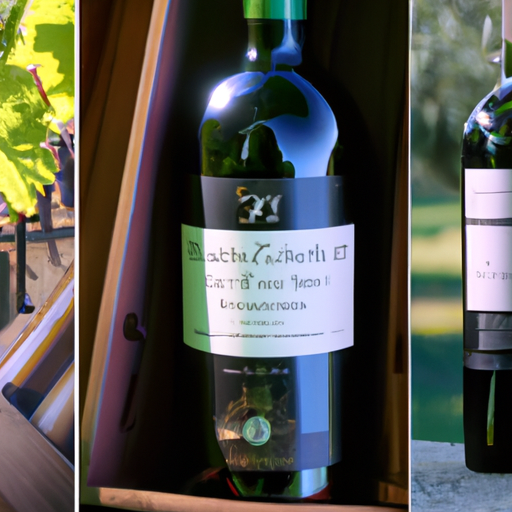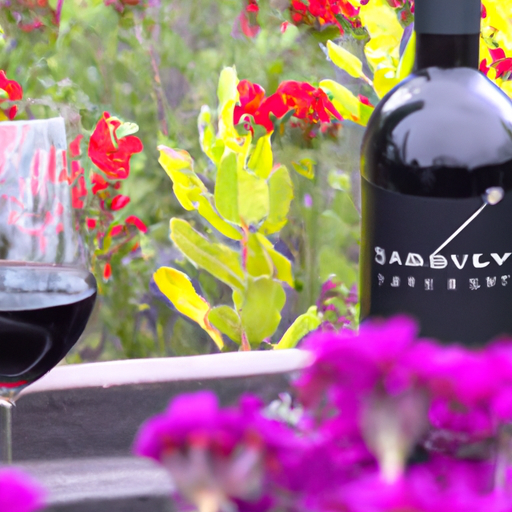
Climate and Weather Conditions
The exceptional 2016 Cabernet Sauvignon vintage has been the talk of the wine industry. Wine enthusiasts and experts alike have been raving about the quality and character of the wines produced in this particular year. While there are several factors that contribute to the success of a vintage, one of the key elements that cannot be overlooked is the climate and weather conditions during the growing season.
The climate and weather conditions play a crucial role in the development of grapes and ultimately, the quality of the wine. In the case of the 2016 Cabernet Sauvignon vintage, the weather conditions were near perfect. The growing season experienced a moderate climate with warm, sunny days and cool nights. This combination allowed the grapes to ripen slowly and evenly, resulting in wines with exceptional balance and complexity.
The moderate climate during the growing season was largely influenced by the overall weather patterns in the region. The year 2016 saw a relatively mild winter with adequate rainfall, which provided the vines with the necessary moisture to thrive. This was followed by a dry and warm spring, which allowed for healthy bud break and flowering. The summer months were characterized by warm temperatures and ample sunshine, which facilitated the photosynthesis process and the accumulation of sugars in the grapes.
One of the key factors that contributed to the exceptional quality of the 2016 Cabernet Sauvignon vintage was the absence of extreme weather events. Unlike some other vintages that have been plagued by heatwaves, droughts, or heavy rains, the 2016 growing season was relatively stable. This stability allowed the grapes to develop slowly and steadily, resulting in wines with optimal flavor and tannin maturity.
The cool nights during the growing season also played a significant role in shaping the character of the wines. The diurnal temperature variation, where the temperature drops significantly at night, helps to preserve the acidity in the grapes. This acidity is crucial in balancing the ripe fruit flavors and providing structure to the wine. The cool nights of the 2016 vintage helped to maintain this acidity, resulting in wines with vibrant fruit flavors and a refreshing finish.
Another factor that cannot be overlooked is the overall length of the growing season. The 2016 vintage had a longer growing season compared to previous years. This extended period allowed the grapes to fully ripen and develop complex flavors. The longer hang time on the vine also contributed to the development of mature tannins, which are essential for the aging potential of Cabernet Sauvignon wines.
In conclusion, the exceptional 2016 Cabernet Sauvignon vintage can be attributed to the favorable climate and weather conditions during the growing season. The moderate climate, absence of extreme weather events, cool nights, and longer growing season all played a significant role in shaping the quality and character of the wines. These factors allowed the grapes to ripen slowly and evenly, resulting in wines with exceptional balance, complexity, and aging potential. The 2016 vintage will undoubtedly be remembered as one of the finest in recent years, and wine enthusiasts can look forward to enjoying these exceptional wines for years to come.
Soil Composition and Terroir

The exceptional 2016 Cabernet Sauvignon vintage has been the talk of the wine industry, with critics and enthusiasts alike praising its outstanding quality. Many factors contribute to the success of a vintage, but one of the key elements that cannot be overlooked is the soil composition and terroir.
The soil composition plays a crucial role in the development of the grapes and ultimately the wine. Cabernet Sauvignon is a grape variety that thrives in well-drained soils, and the 2016 vintage benefited from the perfect combination of soil types. The region where the grapes were grown had a diverse range of soils, including clay, loam, and gravel. Each soil type brings its own unique characteristics to the wine, adding complexity and depth.
Clay soils, for example, have excellent water retention properties, which can be beneficial during dry periods. This helps to ensure that the vines have a steady supply of water, even in times of drought. The clay also contributes to the wine’s structure, providing a solid backbone and firm tannins. On the other hand, loam soils are known for their excellent drainage capabilities, preventing waterlogging and ensuring that the vines do not become overly saturated. This allows the grapes to ripen evenly and develop intense flavors.
Gravel soils, on the other hand, are renowned for their ability to retain heat. This is particularly advantageous for Cabernet Sauvignon, as the grape variety requires a long, warm growing season to fully ripen. The gravel acts as a heat sink, absorbing the sun’s rays during the day and radiating the heat back to the vines at night. This extended exposure to warmth allows the grapes to reach optimal ripeness, resulting in wines with rich fruit flavors and supple tannins.
In addition to soil composition, the terroir of the region also plays a significant role in shaping the character of the wine. Terroir encompasses a range of factors, including climate, topography, and even the local flora and fauna. The 2016 vintage benefited from a favorable terroir, with a Mediterranean climate that provided warm, dry summers and mild winters.
The region’s topography also played a part in the exceptional quality of the vintage. The vineyards were situated on gently sloping hillsides, allowing for excellent drainage and preventing water accumulation. This ensured that the vines did not suffer from excess moisture, which can lead to disease and poor grape quality.
Furthermore, the local flora and fauna in the region contributed to the overall health of the vineyards. The presence of beneficial insects and plants helped to maintain a balanced ecosystem, reducing the need for chemical interventions. This natural approach to viticulture not only benefits the environment but also enhances the quality of the grapes and the resulting wine.
In conclusion, the exceptional 2016 Cabernet Sauvignon vintage owes much of its success to the soil composition and terroir of the region. The diverse range of soils, including clay, loam, and gravel, provided the perfect conditions for the grapes to thrive. The terroir, with its Mediterranean climate, favorable topography, and balanced ecosystem, further contributed to the exceptional quality of the vintage. As wine enthusiasts continue to savor the 2016 Cabernet Sauvignon, it is clear that the soil composition and terroir played a pivotal role in creating a truly outstanding vintage.
Vineyard Management and Winemaking Techniques
The exceptional 2016 Cabernet Sauvignon vintage has been the talk of the wine industry, with critics and enthusiasts alike praising its outstanding quality. Behind this success lie a combination of key factors, including meticulous vineyard management and innovative winemaking techniques.
Vineyard management plays a crucial role in the development of high-quality grapes. In the case of the 2016 Cabernet Sauvignon vintage, vineyard managers focused on achieving optimal vine balance. This involved carefully monitoring the vine’s growth and ensuring that it received the right amount of water, nutrients, and sunlight. By maintaining this delicate balance, vineyard managers were able to produce grapes with exceptional flavor and structure.
Another important aspect of vineyard management was the careful selection of grape clones. Different clones of Cabernet Sauvignon possess unique characteristics, such as flavor profiles and ripening patterns. By selecting the most suitable clones for their vineyards, winemakers were able to enhance the complexity and depth of the resulting wines. This attention to detail in clone selection contributed to the exceptional quality of the 2016 vintage.
In addition to vineyard management, innovative winemaking techniques played a significant role in the success of the 2016 Cabernet Sauvignon vintage. One such technique was the use of optical sorting machines. These machines employ advanced technology to sort grapes based on their size, color, and ripeness. By removing any underripe or damaged grapes, winemakers were able to ensure that only the highest quality fruit was used in the winemaking process.
Another technique that contributed to the exceptional quality of the 2016 vintage was extended maceration. Maceration is the process of allowing the grape skins to remain in contact with the juice during fermentation. This process extracts color, tannins, and flavor compounds from the skins, contributing to the wine’s structure and complexity. By extending the maceration period, winemakers were able to extract even more of these desirable compounds, resulting in wines with exceptional depth and intensity.
Furthermore, the use of oak barrels during the aging process played a crucial role in shaping the character of the 2016 Cabernet Sauvignon vintage. Winemakers carefully selected the type of oak and the level of toast to impart specific flavors and aromas to the wine. The oak barrels also allowed for a slow and controlled oxidation process, which helped to soften the tannins and integrate the flavors. This careful use of oak barrels added another layer of complexity to the wines, contributing to their exceptional quality.
In conclusion, the exceptional 2016 Cabernet Sauvignon vintage can be attributed to a combination of meticulous vineyard management and innovative winemaking techniques. Vineyard managers focused on achieving optimal vine balance and carefully selected grape clones to enhance the quality of the grapes. Winemakers employed advanced technologies such as optical sorting machines and extended maceration to extract the best possible flavors and structure from the grapes. The use of oak barrels during the aging process further added complexity and depth to the wines. These key factors, combined with the expertise and passion of the winemakers, resulted in a vintage that will be remembered for its exceptional quality for years to come.






